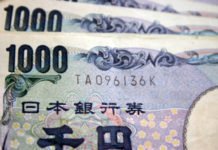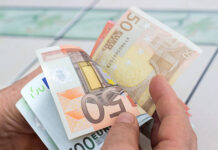- European equity indices record small gains in an uneventful trading session. The risk rebound which started at the end of last week, stalled. US stock markets open mixed to slightly lower.
- North Korea has vowed to redouble efforts to acquire nuclear weapons that can strike the US mainland, pledging that America would face the "greatest pain it ever experienced" after the UN imposed its toughest sanctions against the rogue nation.
- Saudi Arabia, the world’s biggest crude exporter and the main driver behind OPEC policies is now pushing for monitoring of exports, rather than just production, at a Sept. 22 meeting of oil producers in Vienna. Oil exports from member countries have declined so far, but by a significantly smaller margin than production cutbacks.
- Britain’s unemployment rate hit its lowest since 1975 (4.3%) but wages (2.1% Y/Y) slipped further behind the cost of living, taking some of the urgency out of a Bank of England debate on when interest rates might rise.
- EC President Juncker called for the bloc to expand its economic links from Asia Pacific to Latin America, highlighting the EU’s ambition to champion free trade in the wake of President Donald Trump’s "America First" policies. He called on EU governments to seize a window of opportunity from Brexit and economic growth to forge a tighter union.
- EMU industrial production rose by 0.1% M/M in July, after contracting (-0.6% M/M) in June. It’s a weak start to 3Q, though the sector seems to be heading for another positive quarter — as evidenced by the buoyant soft data.
- US producer prices rose in August, albeit less than expected, reinforcing the view in the market that Fed officials will take a more cautious stance as they try to determine the pace of future rate rises. The producer price index – a key measure of industrial inflation –nudged 0.2% M/M and 2.4% Y/Y higher in July.
Rates
Correction core bonds yields stalls ahead of US eco data
Global core bonds traded within narrow sideways ranges today. The risk rebound since Friday afternoon shifted in a lower gear and so did the correction higher of the dollar and core bond yields. EMU/US eco data remain confined to second tier numbers with outdated EMU industrial production bang in line with expectations and US PPI rising, but slightly less than forecast. Investors are clearly waiting for new impetus from the US side of the story with CPI numbers (tomorrow), retail sales (Friday) and the FOMC meeting (next Wednesday) lining up. ECB Praet is scheduled to speak after European closure. He generally keeps close to Draghi’s comments and is a member of the dovish wing inside the ECB.
At the time of writing, changes on the German yield curve range between -0.7 bps (30-yr) and +0.7 bps (2-yr). US yield differences vary between +0.6 bps (2-yr) and -0.2 bps (30-). On intra-EMU bond markets, 10-yr yield spread changes versus Germany range between -2 bps and +2 bps.
The German Finanzagentur tapped the on the run 10-yr Bund (€3B 0.5% Aug2027). The auction met again with tepid demand. Total bids amounted €3.85B, slightly below the €3.99B average at the previous 4 Bund auctions. The Bundesbank set aside €0.55B for secondary market operations, resulting in an official bid cover of 1.6. The auction had a rather large, 3 cent, tail. The Italian Treasury launched a new 7-yr BTP (€4B 1.45% Nov2024) and tapped the on the run 3-yr BTP (€2.5B 0.35% Jun2020) and 20-yr BTP (€1.5B 2.25% Sep2036). The combined amount sold was the maximum of the intended €6.5-8B target range with a strong (for Italian standards) auction bid cover of 1.57. The US Treasury ends its refinancing operation tonight with a $12B 30-yr Bond auction. The WI trades currently around 2.77%.
Currencies
Dollar rebound stalls awaiting news
The overall risk rebound stalled and so did the comeback of the dollar. Eco data were few and if any (US PPI), they very close to consensus. Interest rates or risky assets also failed to provide guidance for USD trading. EUR/USD holds in the mid 1.19 area. USD/JPY hovers near 110.
European investors were looking for additional input to extend the risk recovery and the rebound of the dollar. However, there were no important eco data in EMU and interest rates/interest rate differentials also failed to give guidance. Europe equities couldn’t find inspiration in record closing levels for the major US indices yesterday evening. EUR/USD hovered sideways just below the 1.20 mark. USD/JPY struggled not to fall below 110, awaiting a signal from the US.
US data were of no big help to set up directional positions. US headline final demand PPI rose 0.2% M/M and 2.4% Y/Y (2.5% was expected). The deviation from consensus was insignificant also for other core measures. The dollar tried a shy downside attempt, but the move stalled almost immediately.
The easy part of an overdue risk-rebound, including a comeback of the dollar, has run its course. A more protracted USD comeback needs support from a further improvement in global sentiment or strong US data, but none of these factors materialize at this stage, leaving the dollar in no man’s land. EUR/USD trades in the 1.1960 area. USD/JPY trades just north of 110. That said, the dollar easily maintains the gains of Monday and Tuesday, suggesting that further gains are possible if supportive news kicks in.
Low wage growth caps sterling comeback
Sterling jumped sharply higher yesterday as an unexpected rise in UK inflation put a BoE rate hike again on the radar. Today’s UK labour data failed to clarify the interest rate debate. The discrepancy between activity and wage data persisted. The unemployment rate dropped to 4.3%, the lowest level since 1975 and employment growth remained strong. However, wage growth didn’t accelerate at all. At 2.1% Y/Y, real wages move further into negative territory. This combination leaves Carney and Co with a dilemma. Can they prepare for a rate hike to contain inflation when real disposable income comes under ever growing pressure. Sterling traders didn’t know what card to play. Sterling lost a few ticks after the release, but maintained most of yesterday’s gains. EUR/GBP trades in the 0.9025/30 area. Cable dropped from 1.33+ levels to the mid 1.32 area and trades currently again at around 1.3275. The countdown to tomorrow’s BoE policy assessment has started.














